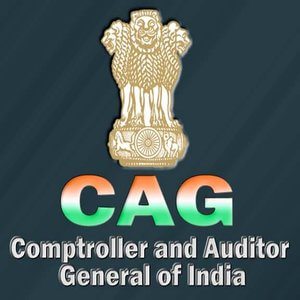What is the full form of CAGCAG: Comptroller and Auditor General of IndiaCAG stands for Comptroller and Auditor General of India. It is an authority that is established under Article 148 of the constitution of India. Its primary role is to audit all the expenditures of the central government, state government, and organizations that are financed by the government. Its headquarters is in New Delhi, India. On August 7, 2020, Girish Chandra Murmu was chosen to serve as India's new Comptroller and Auditor General (CAG). He formerly served as the Union Territory of Jammu and Kashmir's Lieutenant-Governor. On September 25, 2017, Rajiv Mehrishi took over the CAG position in his place. 
CAG is ranked 9th in the Indian order of precedence and has the same status as a judge of the Supreme Court of India. CAG is also the head of the Indian Audit and Accounts Department. It is one of the most powerful bodies to investigate financial frauds in India, such as the coal mine allocation scam and the 2G spectrum allocation scam. CAG is appointed by the President of India on the recommendation of the Prime Minister of India for a term of 6 years. As of 2016, Shashi Kant Sharma is the CAG of India. He was appointed on 23 May, 2013, and he is the 12th CAG of India. Powers of CAGAs per the Companies Act 1956, the CAG is empowered to:
Functions of CAGSome of the major functions of CAG, as prescribed by the Parliament and Constitution are given below:
CAG's role in IndiaThis office's responsibility is to respect the financial administration laws passed by Parliament as well as the provisions of the Indian Constitution. Through CAG reports, the executive's (i.e., the council of ministers') accountability to the Parliament in the area of financial administration is ensured. With regard to expense audits, the office supervises and represents the Parliament.
Structure of CAG's OfficeThe Comptroller and Auditor General of India are in charge of the Indian Audit and Accounts Department (IAAD). Five Deputy Comptroller and Auditors General of India support him. The head of the Audit Board is also one of the Deputies. Four Additional Deputy Comptroller and Auditor General of India are listed below the Deputy CAG. The following people are in this office's hierarchy: Directors General Principal Directors Directors/Deputy Directors Additional Deputy CAG Directors Field office formations are led by officers with the titles of DG/PAG/PD/AG, and they answer the relevant DAI/ADAI. The operational and regulatory responsibilities of the CAG at the state level are carried out by a variety of Accountants, General at the regional level in a number of different states. One Director serves as the current CAG's secretary. What Obstacles does the CAG's Effective Operation face?As corruption and bad administration become more prevalent, audits are becoming more difficult to conduct. In addition to their long-standing responsibility of closely monitoring the Central and State governments, CAG is currently auditing a number of public-private partnerships (PPP) projects. CAG of India has discovered itself in this scenario surrounded by both previously unheard-of opportunities and problems. The Constitution and the law contain no criteria or guidelines for the nomination of the CAG. As a result, the executive now has sole authority to choose who will serve as the CAG. This contravenes universally accepted international best practises. Any government office may be inspected by the CAG, and it has the power to request any accounting. In reality, the supply of records is frequently refused. Furthermore, key records are frequently and unreasonably handed to the auditors towards the end of the audit programme with the express purpose of preventing effective audit of those records.
Next TopicFull Form
|
 For Videos Join Our Youtube Channel: Join Now
For Videos Join Our Youtube Channel: Join Now
Feedback
- Send your Feedback to [email protected]
Help Others, Please Share










